Docking in A Coruña: A Day of Sea Breezes, Stone Streets, and Galician Flavor
One unforgettable day ashore in Spain’s glassy coastal treasure
21 ESCAPESSPAIN
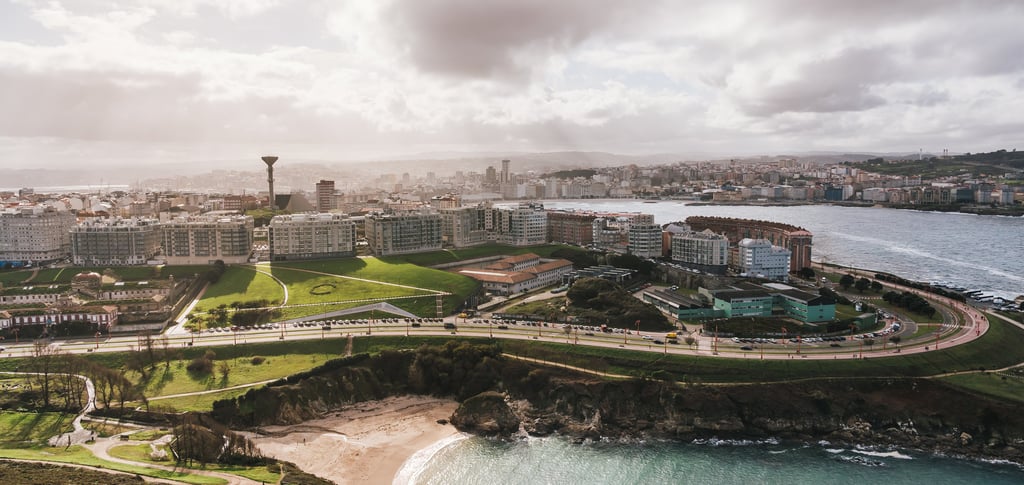

We stepped off the cruise ship with salt still clinging to our skin and the scent of sea spray carried by a crisp Atlantic breeze. A Coruña greeted with elegance, the white shimmering façades of Las Galerías reflecting the early light like the city had dressed up just for us.
It was one of those rare cruise stops where time felt generous, the kind of port where a single day somehow manages to feel like a weekend. With the city unfolding just beyond the dock, we didn’t need a map, just a good pair of walking shoes and a bit of curiosity.
We started with a stroll along the Paseo Marítimo, following the curve of the bay like a thread unraveling from the heart of the city. We wandered to Castillo de San Antón, the stone fortress perched by the sea, now a quiet museum filled with Roman tools, Celtic artifacts, and echoes of centuries past. From the walls, the ocean shimmered like an ever-present witness to history.
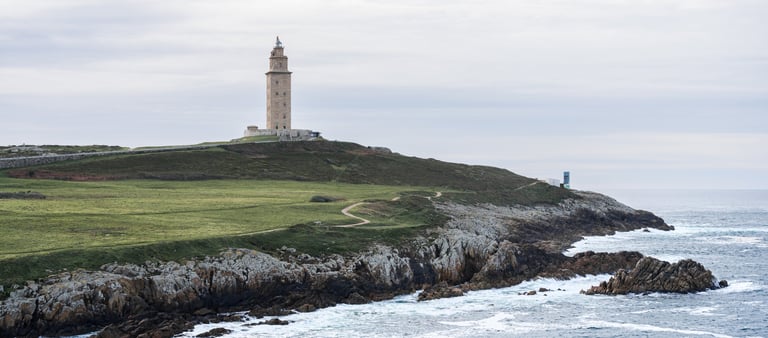

The rhythm of crashing waves was the only sound we needed. At the end of that ribbon stood the Tower of Hercules, a stoic sentinel watching over the Atlantic since Roman times. The climb was real—234 steps—but so were the views. The city lay behind us like a mosaic of red-tiled roofs and green parks, and before us, the endless sea. The wind kissed our faces at the top, and for a moment, we just stood there, letting the wind do all the talking.
From the lighthouse, we followed the curve of the coast down toward Orzán and Riazor beaches, twin stretches of golden sand where surfers sliced through the waves and locals basked in the midday sun. The promenade here felt endless—in the best way—lined with street lamps, with the sea always whispering beside us. Then we turned toward the heart of the Old Town, where time seemed to slow. We wandered into the serene San Carlos Gardens, a quiet refuge filled with manicured hedges, flowering trees, and the tomb of Sir John Moore, the British general who fell here during the Peninsular War. Just beyond, the Iglesia de Santa María del Campo stood in peaceful grandeur, its Romanesque silhouette whispering stories of medieval pilgrims and maritime devotion. From there, we strolled downhill, the rhythm of the city quickening, until we spilled out into Praza de María Pita, the true soul of A Coruña waiting with open arms.
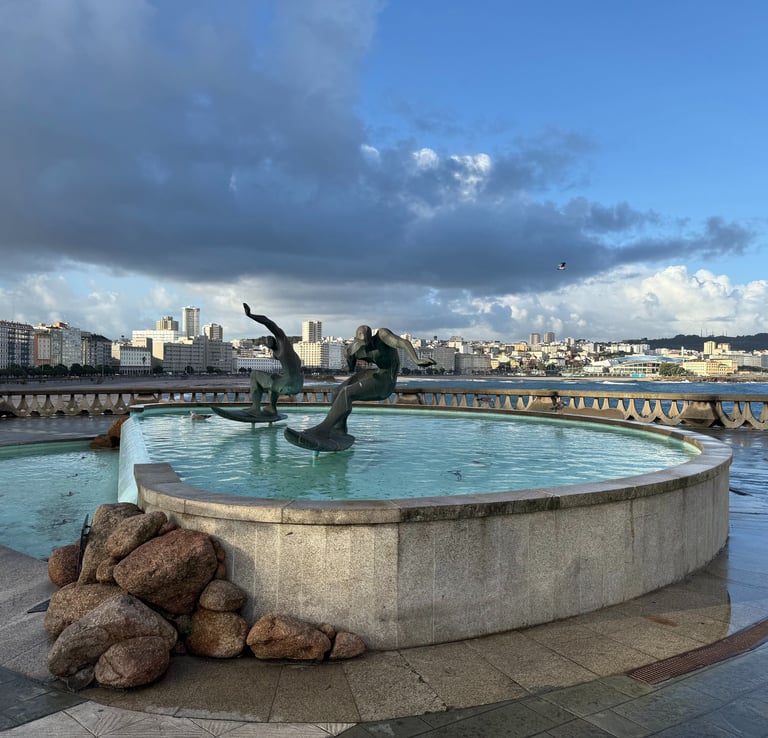

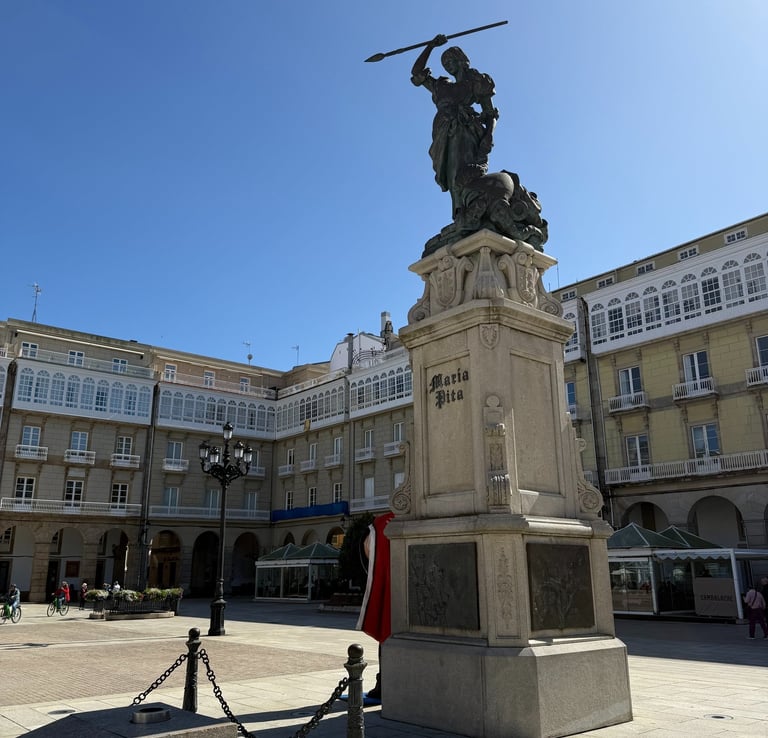

Back in the heart of the city, Praza de María Pita buzzed with life. Children chased pigeons, and locals sipped coffee under shaded terraces. The statue of María Pita, sword raised mid-rebellion, seemed to eye every passerby with fierce pride. Her story—defending the city from English invasion in 1589—felt alive here.
We drifted into the old town, where every corner was another opportunity to stop and snack. A plate of pulpo a la gallega—tender octopus dusted with paprika—arrived at our table with just a drizzle of golden olive oil. We didn’t speak much. Just nodded and passed the Albariño.
Next came empanada gallega, stuffed with tuna and slow-cooked onions, then a dish of chipirones—tiny squid, flash-fried and tossed with sea salt. A waiter winked when we ordered percebes, those alien-looking barnacles plucked from Galicia’s rocky coast. He brought them out like a magician revealing a final trick. We devoured them, shells cracking under our fingers like miniature treasure chests.

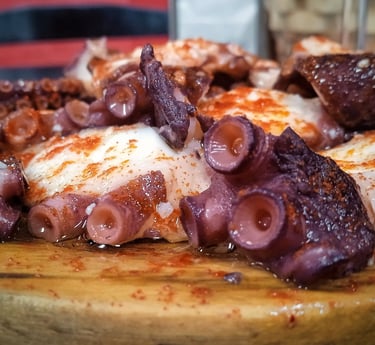
We walked it off slowly, returning toward the port via the city’s most iconic view—Las Galerías, those famous white-glassed balconies shimmering in the late sun. The buildings stood shoulder to shoulder, elegant and timeless, like a row of old friends watching the world go by.
We took a seat at a terrace overlooking the harbor. The air was cooler now, and a soft mist rolled in. Locals passed with their shopping bags, a busker strummed a slow tune. We ordered coffee and churros—the perfect excuse to sit a little longer.
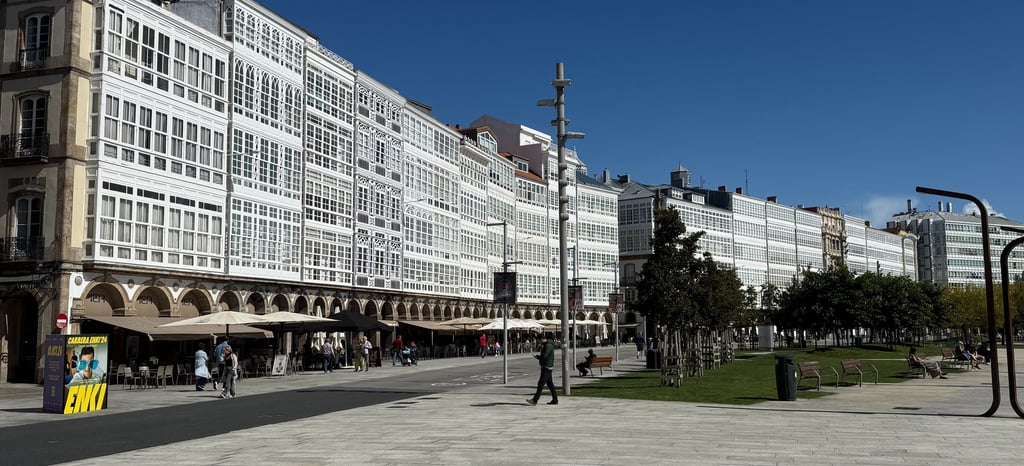

As the ship loomed again in the background, lights beginning to glow from its decks, we hesitated. There’s something bittersweet about falling in love with a place so quickly. A Coruña had given us just a taste—of stone towers and stormy myths, salty tapas and proud, Galician warmth. Somewhere behind us, faint but clear, came the melodic cry of a gaita—the Galician bagpipe—played by a lone gaiteiro in a plaza we’d just left. It was a sound both ancient and alive, echoing between the stone walls and out toward the sea, like a blessing whispered on the wind.
We didn’t see Monte de San Pedro this time. We didn’t ride the glass elevator, or picnic in Santa Margarita Park, or visit the Casa de las Ciencias. But maybe that’s the point. A Coruña isn't just for checking off landmarks—it's for walking slow, eating well, and breathing deep.
And we’ll be back. Because one day wasn’t nearly enough.
Crunia Travel
Customized travel experiences await you.
Get in touch
hello@cruniatravel.com
+1 754 457 2624
© 2025. All rights reserved.


admin@cruniallc.com
